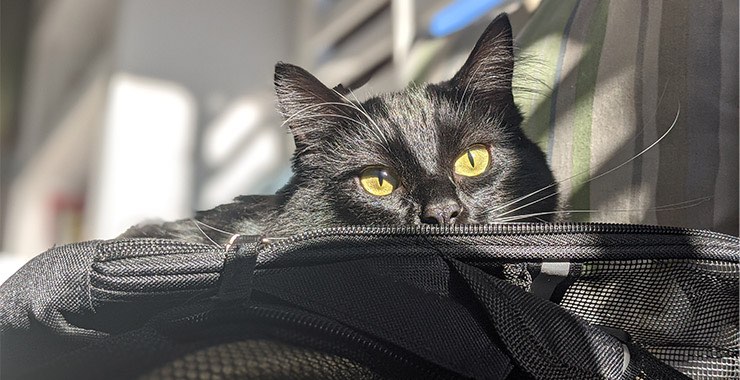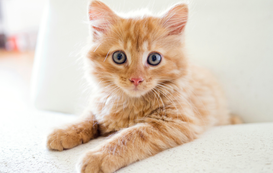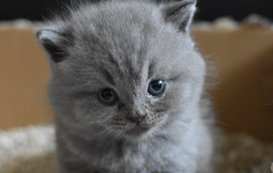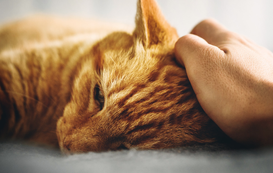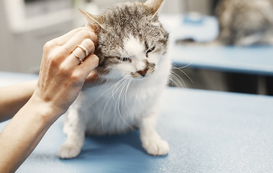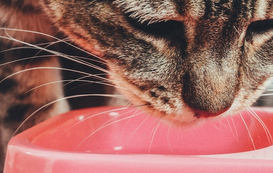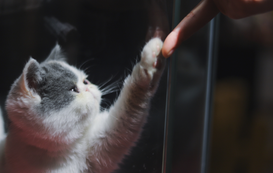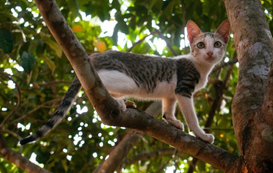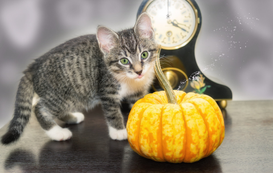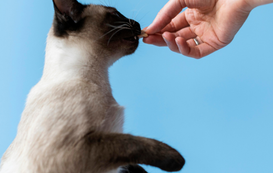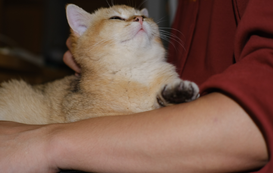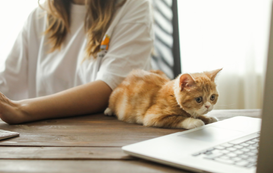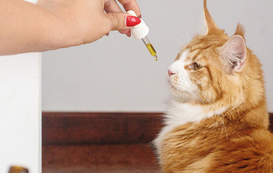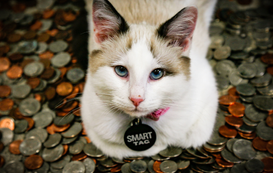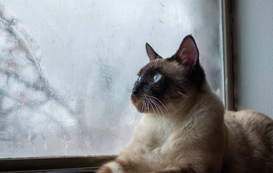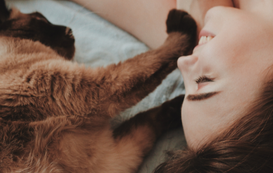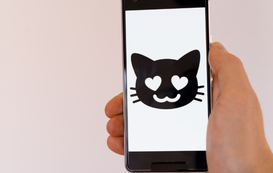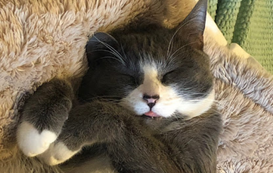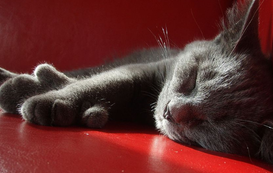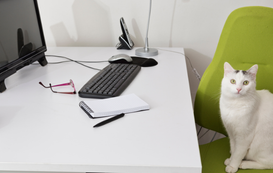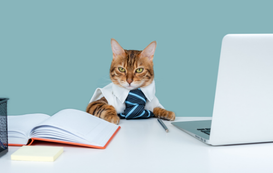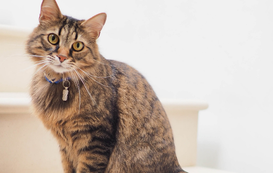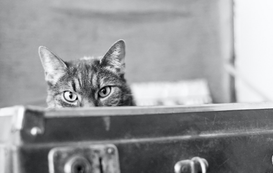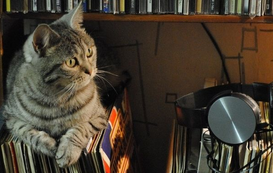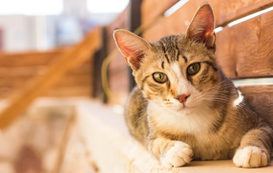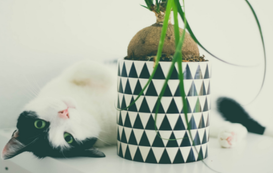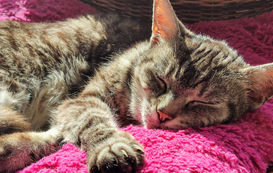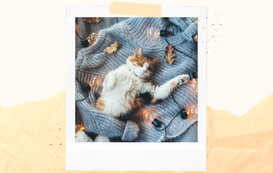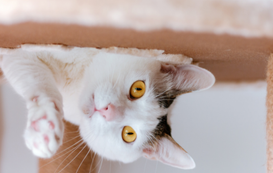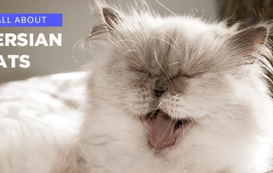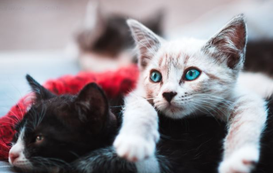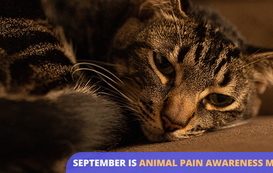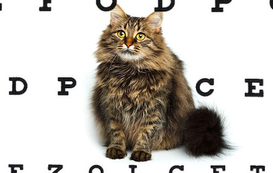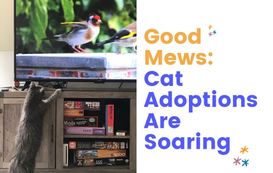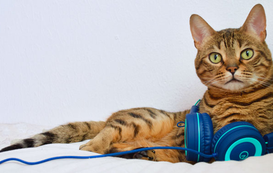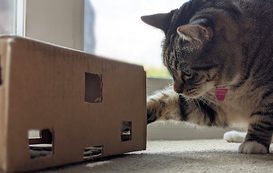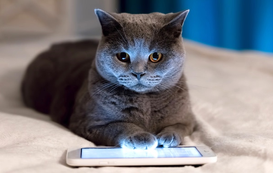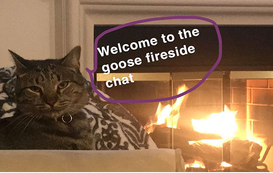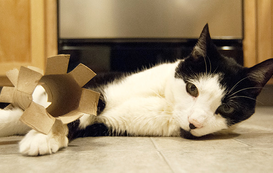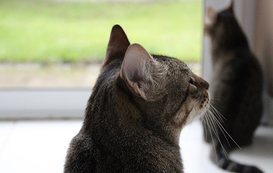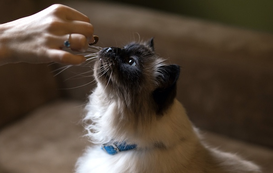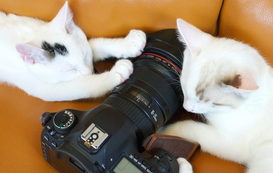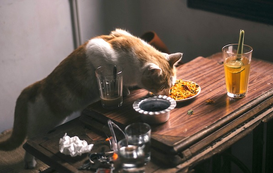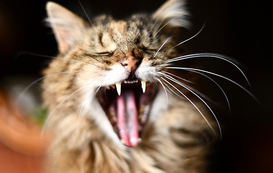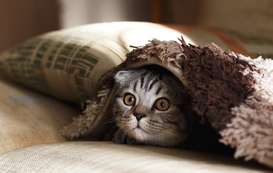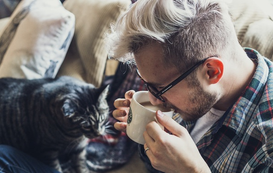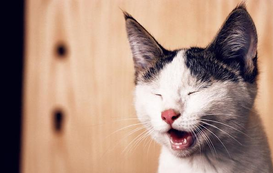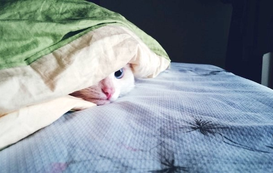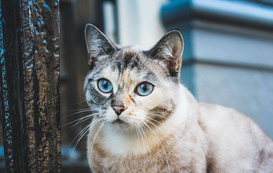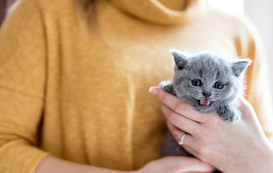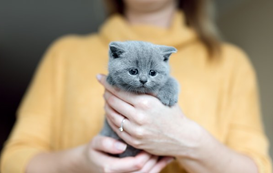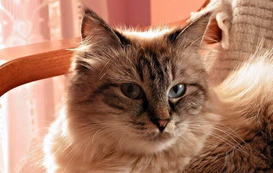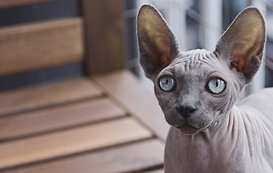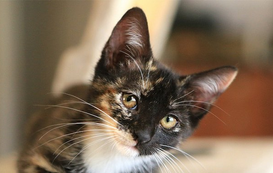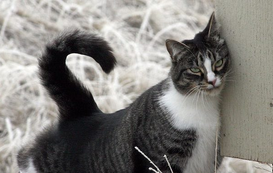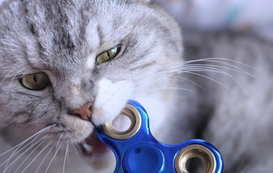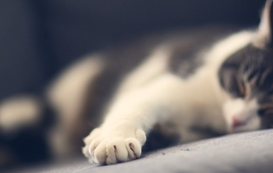Popular posts
The Ins and Outs of Flying with Your Cat
This post contains affiliate links and Meowtel will be compensated if you make a purchase after clicking on the links.
While Meowtel exists so you and your cat can live your best lives, we understand that sometimes you want to take an excursion with Fluffy. If she is up for an adventure and ready to spread her paws, this article will give you tips on how to fly with her. However, if Fluffy is a homebody who would much rather stay home, search our site for your new favorite sitter!
My cat, Maxwell Wellington, is quite the traveler. He’s lived in Syracuse, New York City, Los Angeles, Oroville (WA), and has spent time in Las Vegas. While most trips to Vegas have been in the car, he has taken more cross-country flights than some people. Lately, it’s getting harder to travel with him in his old age and with all of his health issues, but he’s a codependent gent who refuses to eat if I’m not around. (Trust me, I already have two Meowtel sitters on deck should he ever decide to just relax!) So, until that day comes when he learns to chill out, he will continue to fly with me, and I will continue to be a prepared cat mama. I have snacks, meds, collapsible bowls, diapers, and pee pads in my backpack.
Things to do before booking a flight
First things first, let Fluffy get acquainted with her carrier and have her associate her carrier to things other than the dreaded vet. Her carrier should be big enough for her to sit, lay, and turn around comfortably. If you have the space, it’s not a bad idea to leave the carrier out, with either something she loves/or smells like her as well as something that smells like you. From time to time, give her treats (or a meal) in there. By doing this, Fluffy has a chance to become comfortable with the carrier and will allow her to build a different relationship with it. Veterinarians Tammy Hunter, DVM and Robin Downing, DVM suggest considering “a soft-sided travel carrier as it is more “forgiving” for fitting under the airline seat space.” 1 Most old school, hard-sided cases won’t fit under the seat.
If you’ve never flown with your cat before, start with smaller trips before you conquer flying. Once Fluffy has become besties with her carrier, the next step is to master a driving trip. It can be a short trip with the only destination being driving around the block, or it can be to a friend or relative’s home. Start small. If Fluffy seems to hate the car, try using homeopathic calming pheromones like Rescue Remedy. Driving to places other than the vet will allow Fluffy to learn the world is bigger than she thought.
Before you book your flight, make sure you have read all the instructions and restrictions in regards to the particular airline you plan on flying. More often than not, airline rules vary. Make sure you hit every requirement before booking your flight. Hunter and Downing want you to know “when choosing your seat, be aware that you will not be able to sit in an exit row nor against a bulkhead (there must be a seat in front of you for the carrier). Try to travel non-stop if possible as layovers and transfers only add to what will be a long day for both you and your cat.”1
Depending on the airline, you may be able to add your pet when you book your online reservation, but often times you have to call to add Fluffy after the reservation is complete. Pricing for Fluffy will vary based on the airline and whether or not she’s an Emotional Support Animal (ESA). If Fluffy is an ESA, she will not have an additional fee with the airline, but you will have to submit different forms than if she is flying as a pet passenger. If she is a pet passenger, as of January 2020, pricing varies between $100-200, one way, for travel within the continental United States. Pro Tip: If you have to call, call immediately after booking as airlines tend to limit the number of pets allowed on each plane. It’s best to fly with Fluffy under the seat in front of you as you’ll be able to monitor her during the flight.
If there are any forms you need to have for travel, print them out after booking, and put them somewhere safe so you don’t forget them when you head to the vet and eventually, the airport.
If you travel a lot or plan on traveling often with Fluffy, look into TSA Pre-Check. It’s the best $85 I’ve ever spent. It’s good for 5 years, and it limits the amount of items you need to take off and take out of your bag, which will make getting through TSA with Fluffy in hand that much easier.
Post-booking, pre-travel
Two to four weeks before your flight, visit your vet. Let your vet know that you’re planning on flying with Fluffy as well as the dates of travel. Your vet should do a general check-up to make sure Fluffy is in good health to fly as well as make sure she is up to date with all vaccines. Talk to your vet about your flight prep and travel plan. If Fluffy has really bad anxiety or isn’t healthy enough to fly, don’t push it. Fluffy’s health is the most important thing so this is when you’d resign to the fact that Fluffy won’t be flying. (This is where Meowtel comes in!)
If your vet gives the ok, ask if he or she thinks Fluffy would benefit from a mild sedative. You may be lucky, and Fluffy may not need a sedative. Purrhaps, your vet will suggest something like Rescue Remedy, Sentry’s Calming Collar or Feliway Calming Travel Spray. But if your vet thinks a sedative is the way to go, talk about the different options, and ask for a few to try at home. Max has a slight heart murmur so there are milder sedatives that are better for his health than others. Ask your vet for a flight/health certificate (if applicable), rabies certificate, and to fill out any forms the airlines may require.
If your vet prescribed a sedative, set aside a full day when you can try the sedative (or if you were given a few, try one per day). The point of this is to see if Fluffy has any reactions to the sedative. The last thing you’d want is to wait until travel day to find out it does not mesh well with her chemistry. So give little miss Fluffy one sedative and stay with her, watching her general demeanor, including breathing, for 8-12 hours. Most sedatives will wear off by the 8-hour mark, but of course, this all depends on your cat’s health, weight, disposition, as well as the medication and dosage. Hopefully the first sedative will be perfect, but don’t be surprised if it’s not. It’s likely that Fluffy will become lethargic and sleepy but that’s the goal. However, sometimes she may not have a great reaction or she may seem to “fight the high.”
While Alprazolam is my vet’s first choice for Max with his heart murmur, for some reason, Max fights the Alprazolam high. He feels the need to try to jump on and off my very high bed multiple times which is difficult because he walks like a drunken sailor. He gets very vocal (not ideal on a plane) and refuses to sit, relax, or sleep. It also lasts about 12 hours for him. So, since that wasn’t the right fit, the following day I tried Gabapentin, and that is our flight drug of choice. He was mellow, calm, and slept which is exactly what I wanted for our flight. If at any point during your home testing/monitoring something seems wrong with Fluffy, call your vet immediately.
There was another sedative we tried with Max years ago and he could not walk at all. He was breathing heavily (likely because he was fighting the high) and kept falling. When he would fall, he would look up at me scared and confused. As a cat parent, I was terrified that he was having a bad reaction. I called my vet immediately and was told it was likely not a good fit with him, and if he started vomiting or mouth breathing, then he had to go to the ER. Though if neither of those things happened, I just had to wait until it worked its way out of his system. It was a long night, but thankfully, he was ok. Rest assured, we threw that sedative out. Once you decide on the sedative that works best, tuck that away with your travel stuff so you know where it is when it comes travel day.
Today’s the day! Up, up and away
When the day finally arrives, give yourself ample time to get ready with Fluffy. This pertains to the final packing, traveling to the airport, and getting through security. Make sure you have food and/or treats, a water bowl, wipes or paper towels, disposable gloves, anti-bacterial hand sanitizer, pee pads or a diaper, all documents needed by the airline, and meds (if applicable) packed in your carry on. If you have decided on giving Fluffy a sedative, be sure to give it during the time frame suggested by your vet. If Fluffy doesn’t normally wear a collar and ID tag, now is the time to put one on her.
Hunter and Downing say, “Traveling on an empty stomach minimizes the risk of nausea and vomiting, so withhold breakfast on the day of travel.” 1 Purrsonally, I take away Max’s food 4 hours before we fly as he has a tendency of working himself up, throwing up on the way to the airport, and sometimes, even in the airport.
If you’re using a rideshare, schedule the ride ahead of time (if this option is available). If that’s not an option, give yourself plenty of time should you run into traffic. Traveling is stressful by yourself but adding a cat will up the stress level. Don’t add even more to it by not giving yourself enough time to get through TSA. Always text your driver, and let them know you have a cat in a carrier should they be allergic. I have had a few drivers cancel when they received that text which is why padding travel time is key. On the flip side, there’s a chance the driver will refuse to take you if you don’t give them a heads up.
Once you arrive at the airport, check in like normal, and have your documents ready to give to the person at the service counter. After you’ve been given your ticket and you head to TSA, be prepared to take Fluffy out of her carrier as you go through the machines. Her carrier will need to go through the x-ray machine with all of your belongings, but Fluffy will have to be carried through with you. If Fluffy is a bit skittish, it’s not a bad idea to have a leash you can attach to her collar and or harness. You’re allowed to keep the leash on her when going through the machine. Don’t be surprised if you’re pulled out of line and have your hands or Fluffy’s coat tested. It’s happened to me multiple times where something shows up on my hands. While I can’t be certain, I believe it is likely Max’s dander showing up on my hands from holding him. Once you’re cleared, grab all of your stuff, put Fluffy back into her carrier, and head to the gate. If you have extra time and she seems to be settled, give her a few treats to thank her for being so great through TSA. Settle in at the gate and wait to board your flight.
Once boarded, get her settled under the seat and buckle up! I always let my neighbors know there’s a cat under the seat in case of allergies. More often than not, I’ve had kind neighbors. Check on Fluffy during the flight so she knows you haven’t abandoned her. It’s likely she’ll be sleeping and enjoying her little trip which will allow you to sit back and relax as well.
However, sometimes Fluffy just wants to keep all four paws on the ground, and that’s okay. Meowtel has plenty of cat-centric sitters that will help keep Fluffy happy while you are up, up, and away. Our sitters are here to make sure kitty parents truly enjoy their time away.
- Hunter DVM, Tammy and Downing, Robin DVM, CVPP, CCRP, DAAPM (2019). Flying with Your Cat. https://vcahospitals.com/know-your-pet/flying-with-your-cat
Meowdel: Klaus in San Diego

